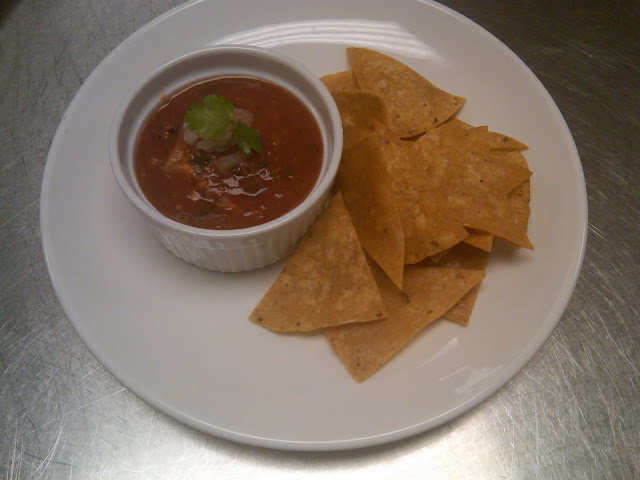Latin cuisine week 6
Here we are still in the lovely South America, one place I would absolutely love to visit. From the rain forests to the Amazon to the Andes to Patagonia, South America has a lot to offer, including great food.
Every week in this class just keeps getting better, I look forward to Latin Cuisine as I have said before. I think I will be disappointed when this class is over.
This week the dough making was hard again. It was a difficult task for me and when I describe the empanadas you will understand what I mean.
Here's the menu-
Feijoada (Bean stew with beef and pork):
This is an interesting dish as it has six or seven different kinds of beef and pork. I am wondering if this started out as a "clean out the fridge" kind of stew. It even has chorizo! Either way, it is great. The chorizo really comes through to add some spices and boldness to the complex combination of flavors. We served it with some shredded kale and a rice pilaf. I plated this dish twice because I was not happy with the first presentation. Of course, my photo is only of the first plate. oh well....
Salada do Chuchu (chayote salad):
Interestingly enough, we did not have any chayote for this chayote salad (thanks chef venne), so we di what we could to make a good salad with some South American flair. It worked out well, the avocado adds a nice flavor a looks great as well.
Chupe de Quinua (quinoa chowder):
This was my least favorite dish of the day. Quinoa is a hot grain these days so we had to use it. Its not bad, but I am not a big fan of this style of soup. It has a grain mixed with corn type of flavor to it. Quinoa is one of the very few plant proteins that is a complete protein, so it is a good choice for meat replacement. That is likely one of the reasons for its increased popularity of late. We garnished ours with avocado.
Sauteed Shrimp and Scallops:
This was not a planned dish, but we had so much left over shrimp and scallops from the ceviche that we had to do something with them. We chose to saute them with salt and pepper and serve them over a hash of corn and roasted red peppers. It is garnished with cilantro.
Ceviche Mixto (mixed shellfish ceviche):
This ceviche can be made with almost any type of shellfish that is first cooked and then marinated in a liquid made mostly from lime and cilantro. I is often served almost as a soup with the shellfish sitting in the liquid and eaten with tortillas and some sort of hot sauce. We served ours drained and dry on a plate. It has a very fresh and clean taste. It feels and tastes pure on the tongue. Very good.
Cuscuz de Tapioca Molho de Chocolate (tapioca and coconut cake in chocolate sauce):
This dish was interesting and a little different. The flavor were really good and creamy but the texture was, well, slimy. It's the tapioca. For the sauce for added some Kahlua and that made all the difference. I would be glad just to eat the sauce alone out of a trough, without a spoon.




















































